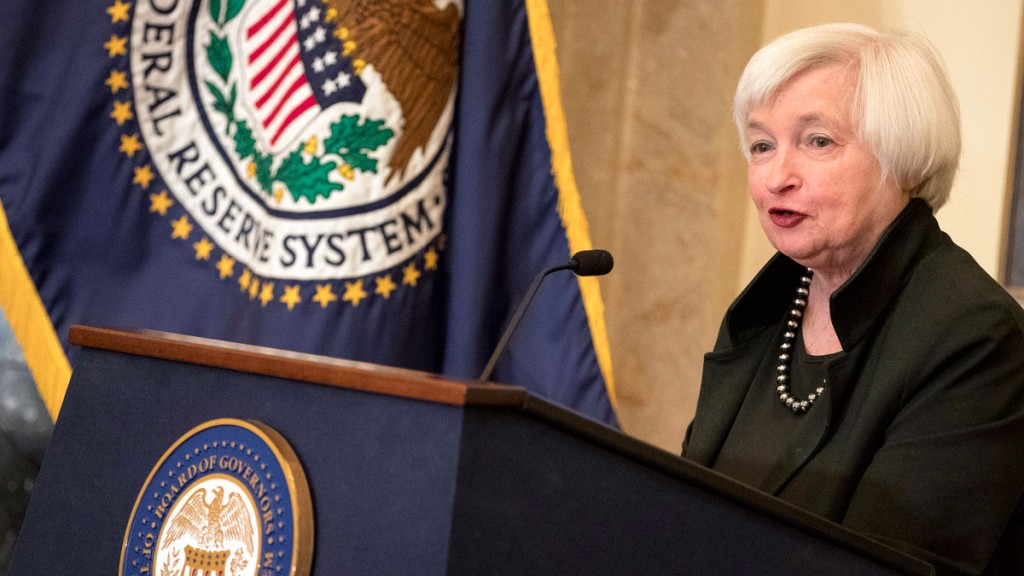
This week, the Budget hogged the business headlines in the UK. But the really important stuff for markets was going on across the Atlantic.
The most obvious indicator that something’s been going on is the gold price. At the start of this week, gold cost around $1,225 per ounce. Now it’s fallen back below $1,200.
Why the sudden slide?
It’s all because of the Federal Reserve…
Why the market now sees a rate rise in March as a foregone conclusion
Not so very long ago, the markets believed there wasn’t much chance of the US central bank raising interest rates this month.
Then the Federal Reserve started making speeches. Even usually “dovish” members (ie, ones who want to keep rates low) were talking about how it was time to raise rates. Markets started to push the odds on a rate hike this month higher.
Then this week (on Budget day, in fact) a relatively minor US employment indicator, the ADP employment report, absolutely shot the lights out. The ADP report is a measure of US private sector job growth. The non-farm payrolls report – out today – is much more important, and in a straight fight, the market places much more importance on the non-farm number.
But the ADP report was so stellar – with nearly 300,000 jobs added last month, compared to expectations for fewer than 200,000 – that markets now believe that there will definitely be a rate rise this month. What’s more, they’re starting to price in a rise in June as well.
What’s all that mean? It means a higher US dollar (higher interest rates mean a stronger currency, all else being equal). Hence the slide in gold (and, to an extent, in oil as well).
It means a rise in US interest rates – the US ten-year Treasury yield is now very close to breaking through the line on the chart that would convince many people that the bull market in Treasuries really is over.
And it means that we might get to see just how much stomach investors really have for tighter monetary policy.
What could stop another rate rise?
Could anything throw a spanner in the works?
Well, you should keep an eye on the non-farm payrolls data later today. Make no mistake, it is a flaky report for anyone to rely on. It’s the best idea we’ll get of how the US employment picture is unfolding, but the initial report is hardly etched in stone.
It’s a statistic that is constantly revised at later dates, often significantly. It’s also – because of the way it’s constructed – not very good at spotting turning points (in effect, there’s an element of statistical momentum in the way that the data is built so it’ll be overly positive when the economy is about to slow down and overly negative when it’s about to improve).
Yet traders will win or lose millions based on statistically insignificant differences between one outcome and another when the number is pulled out of the hat this afternoon.
Anyway, none of that particularly matters for you (I’m assuming that you’re too sensible to day-trade the non-farm payrolls data). The point is that this is probably the very last data release that could realistically put the Fed off raising rates later this month. But it would have to be dire for that to happen. Markets are expecting 197,000 jobs to be added – I reckon we’d have to be looking at a five-figure (rather than a six-figure) number for any sort of delay to happen.
What’s it all mean for markets? Well, I’ve already said many times that the Fed is already behind the curve, and I expect it to stay there. It’s worth remembering that if we’d stuck with some of the Fed’s past predictions, US interest rates would already be well above 2%. Remember that the Fed can be raising rates, and monetary policy can still be getting looser – as long as they allow inflation to climb faster than rates do.
What will be more interesting however, is if markets decide to throw a wobbly again, just as they did after the first rate rise in December 2015.
It’s quite plausible that they might. US stocks look expensive and there’s a more “toppy” atmosphere than there has been in some time. There’s the Snap IPO for one. The oil price has taken a nasty slide this week too – stocks could follow, just as they did back at the start of 2016.
And then there are the odd little hints that there are a lot of “reluctant bulls” out there. I read a telling quote from billionaire hedgie David Tepper on CNBC the other day. He admitted that stocks aren’t cheap. However, he said, “it’s hard to go short when you still have the drugs being given… The punch bowl’s still full.”
It’s not quite up there with Chuck Prince’s infamous pre-2008 quote – “As long as the music is playing, you’ve got to get up and dance” – but there’s a flavour of the same sentiment.
The Fed might get a couple of rate rises in before the market does have a fit. But I’d be surprised if we don’t get one at some point. Which is one reason why I’m happy to hang on to gold in the meantime.